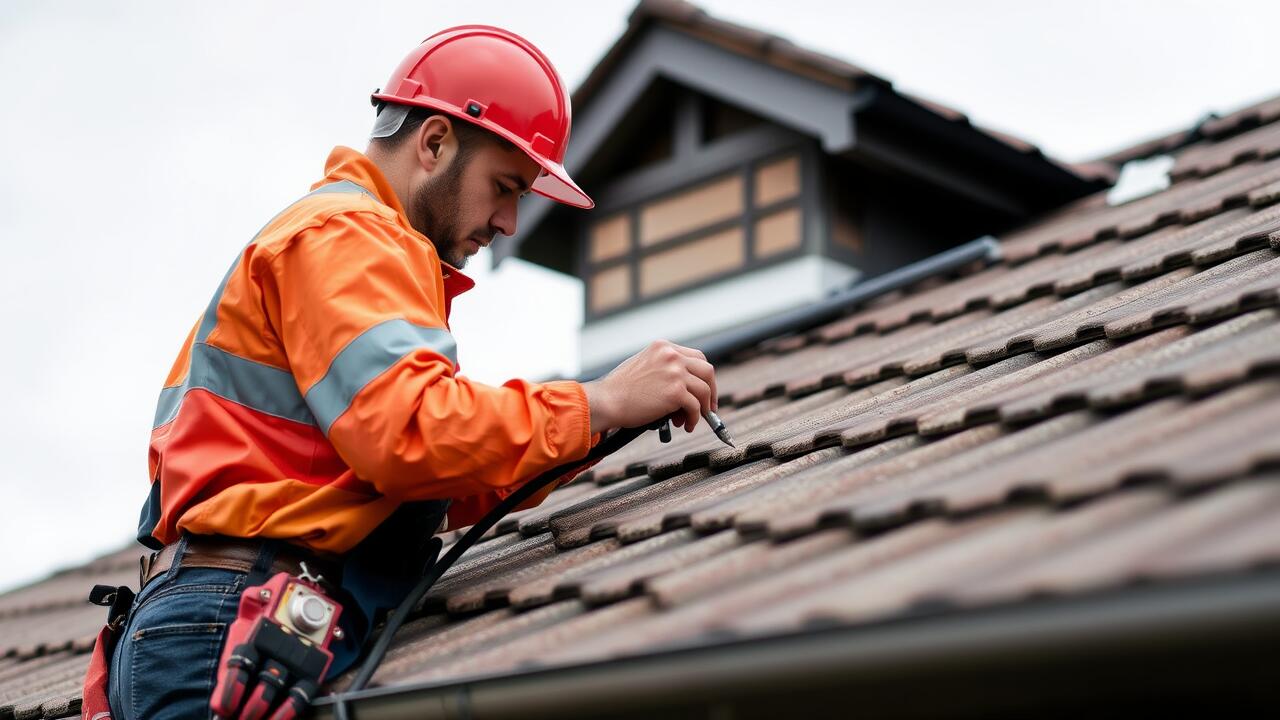How to tell if a roof needs repair?

Table Of Contents
Importance of Regular Maintenance
Regular maintenance plays a crucial role in prolonging the lifespan of a roof. Neglecting small issues can lead to more significant problems over time. Simple tasks like clearing debris and checking for leaks can prevent extensive damage and costly repairs. Homeowners who actively maintain their roofs often note improved efficiency in heating and cooling systems, translating to lower energy bills.
Developing a maintenance schedule can help catch potential issues early. Many roofing experts recommend conducting inspections at least biannually. Seasonal changes can bring about various stresses, making routine check-ups essential. Addressing minor repairs promptly not only safeguards the structure but also enhances the overall aesthetic of the home.
Their blog is a great resource for information.
Benefits of Routine Roof Inspections
Regular roof inspections play a crucial role in extending the lifespan of your roofing system. By identifying issues early, homeowners can address minor problems before they escalate into significant repairs, potentially saving substantial costs. These inspections can help detect wear and tear caused by weather, pests, or other environmental factors, allowing for timely maintenance that prevents more serious damage.
In addition to cost savings, routine inspections contribute to enhanced energy efficiency. A well-maintained roof ensures proper insulation and ventilation, reducing energy bills and creating a comfortable indoor environment. Regular assessments also provide peace of mind, knowing that your roof is in good condition and capable of withstanding outside conditions.
Continue to read this blog post for more great tips.
Impact of Weather on Roof Integrity
Weather elements play a significant role in determining the integrity of a roof. Rain and snow can lead to water damage, promoting mold growth and weakening structures over time. High winds can lift shingles and cause them to become dislodged, exposing the underlayment to potential leaks.
Extreme heat can cause roofing materials to expand and contract, leading to cracks and deterioration. Additionally, UV radiation can degrade roofing surfaces, making them more vulnerable to damage. Seasonal changes can accelerate wear and tear, making it crucial to monitor a roof’s condition throughout the year.
Navigate to this website to learn more.
How Extreme Weather Affects Roofs
Extreme weather poses a significant threat to the integrity of roofs. High winds can lift shingles, dislodge tiles, and damage flashings, creating entry points for water. Heavy snowfall adds weight to the structure, raising the risk of sagging or even collapse in older buildings. Additionally, hail can cause visible dents and cracks, necessitating prompt attention to prevent further issues.
Temperature fluctuations further exacerbate roof problems. Intense heat can lead to material expansion, increasing the likelihood of cracking. Conversely, freezing temperatures can cause materials to contract, potentially resulting in gaps and leaks. Consistent exposure to these conditions stresses the roof, highlighting the importance of regular inspections to maintain its durability and performance.
DIY vs. Professional Inspection
Homeowners often consider performing roof inspections themselves as a way to save money. A DIY approach can offer a basic understanding of a roof's condition. Simple checks for missing shingles, cracks, or debris accumulation can be done without special tools. Regular observation of these aspects can also help in building familiarity with the roof’s overall health.
However, some issues require a trained eye for proper assessment. Professionals have experience identifying subtle signs of damage that may not be obvious to the untrained observer. They also possess the necessary equipment and safety gear for comprehensive inspections. Engaging an expert can provide peace of mind and ensure that any underlying problems are addressed before they escalate into costly repairs.
When to Seek Expert Help
Homeowners should consider enlisting professional help when signs of significant damage or wear become evident. Missing shingles, excessive granule loss, or visible sagging may indicate underlying issues that require a trained eye and specialized tools to assess accurately. An expert can provide a thorough evaluation and recommend necessary repairs or replacements, ensuring the long-term integrity of the roof.
In addition to visible damage, other circumstances may warrant professional assistance. After severe weather events like heavy storms or hail, it is prudent to have a roof inspected for hidden damages. Regular annual inspections by qualified roofers can preempt more serious problems, saving homeowners time and money in repairs down the line. Engaging professionals enhances the chances of identifying issues before they escalate, maintaining the roof's functionality.
FAQS
How can I tell if my roof needs repair?
Look for signs such as missing shingles, leaks, sagging areas, and excessive granule loss in the gutters. Regular inspections can help identify these issues early.
Why is regular roof maintenance important?
Regular maintenance helps extend the lifespan of your roof, prevents costly repairs, and ensures your home remains protected from the elements.
What are the benefits of routine roof inspections?
Routine inspections can identify potential problems before they worsen, enhance the overall safety of your home, and save you money in the long run.
How does extreme weather impact roof integrity?
Extreme weather conditions, such as heavy rain, snow, or high winds, can cause damage to roofing materials, leading to leaks, dislodged shingles, and overall roof deterioration.
When should I consider hiring a professional for a roof inspection?
It's advisable to seek expert help if you notice significant damage, have difficulty accessing your roof, or if your roof is nearing the end of its expected lifespan.